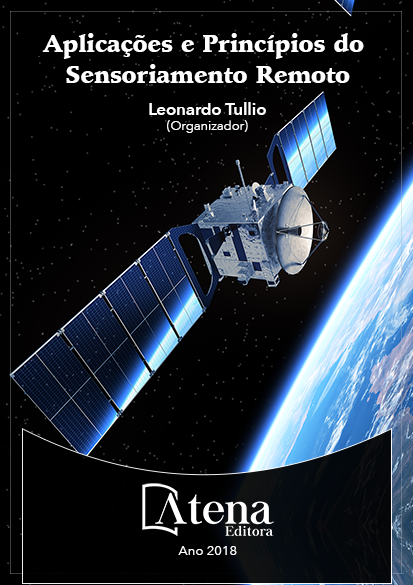
ESTIMATIVA DO ÍNDICE DE ÁREA FOLIAR DA CANA-DE-AÇÚCAR A PARTIR DE IMAGENS DO SATÉLITE LANDSAT-8 (OLI)
As grandes extensões de terras
cultivadas e o entendimento da interação da
radiação solar com os dosséis vegetativos,
têm viabilizado a utilização dos dados de
sensores remotos orbitais no monitoramento
da cana-de-açúcar. Entretanto, os efeitos
atenuantes atmosféricos interferem nos dados
de refletância obtidos pelo sensoriamento
remoto óptico. Assim, propõe-se calibrar um
modelo de estimativa do Índice de Área Foliar
(IAF) da cana-de-açúcar em função do Índice
de Vegetação por Diferença Normalizada
(NDVI) submetido à correção atmosférica.
Foi estimado o IAF em um talhão de 1,08 ha
cultivado com cana-de-açúcar, no município de
Santo Antônio de Goiás – GO, ao final da fase de
crescimento de colmos e a fase de maturação,
na safra 2013/14, além do cálculo do NDVI da
mesma área cultivada obtidos do sensor OLI/
Landsat-8. Assim, analisou-se o comportamento
temporal dos dados em dez datas de passagem
do satélite entre os meses de janeiro/14 e
agosto/14. Os dados do sensor foram corrigidos
pelo algoritmo FLAASH, no intuito de minimizar
os efeitos da atenuação atmosférica sobre a
imagem. O modelo gerado pelo NDVI corrigido
apresentou os melhores resultados (R² = 0,84; d
= 0,95 MAE = 0,44 e RMSE = 0,55) em relação
aos modelos comparados e sua aplicação na
estimativa do IAF resultou em IAF máximo de
4,8 na fase de crescimento vegetativo e 2,3
na fase de maturação. Contudo, recomendase
a aplicação da correção atmosférica, para
a estimativa do IAF da cana-de-açúcar, pois
assim se aproxima o IAF estimado por imagem
do estimado por medidas diretas na planta.
ESTIMATIVA DO ÍNDICE DE ÁREA FOLIAR DA CANA-DE-AÇÚCAR A PARTIR DE IMAGENS DO SATÉLITE LANDSAT-8 (OLI)
-
DOI: Atena
-
Palavras-chave: Crescimento vegetal; Saccharum spp.; Processamento de imagem
-
Keywords: Vegetal growth, Saccharum spp., Image analysis
-
Abstract:
Because of the large areas of
productive farmland, satellite data have been
increasingly used in crop monitoring. However, the constituents of the atmosphere
affect the reflectance values obtained by imaging sensors, as well to minimize these
effects, it is proposed improvements to estimate the Leaf Area Index (LAI) of sugarcane
due to the vegetation index (NDVI) with atmospheric correction. Field data of LAI
were collected in sugarcane plots in the San Antonio region of Goiás - GO in first
cut stage, in the crop year 2013/14 and NDVI data was obtained from the Landsat
sensor 8 OLI (Operational Land Imager. These data were correlated in time in ten
dates of satellite passage. The sensor reflectance data were subjected to correction
by FLAASH algorithm (Fast Line-of-sight Atmospheric Analysis of Spectral Hypercube)
in order to minimize the effects of atmospheric attenuation in the image. Later, there
was a comparison between models that correlate the NDVI and the LAI derived from
this work and others have reported in the literature. The model generated by the NDVI
with atmospheric correction showed the best results (R² = 0.84, d = 0.95 MAE = 0.44
and RMSE = 0.55) and its application in estimating the LAI during the plant cane cycle
obtained maximum LAI of 4.8 in the vegetative growth phase and 2.3 at the end of
the maturation phase. However, it is recommended the use of satellite images from
Landsat 8 with atmospheric correction, to estimate the LAI of sugarcane.
-
Número de páginas: 15
- Rodrigo Moura Pereira


